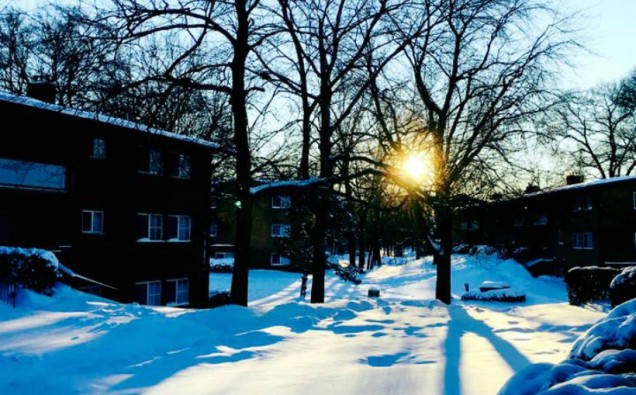
A sunrise after snowfall in Alexandria in 2016, Photo: Aziz Ahmed
Wondering where is the first customary North American wintry sweep of winds, and it is past mid-October? Is it climate change, the loss of arctic snow, warming planet or another example of weather vagaries?
Weather experts have a partial answer to that question and the pattern so far indicates the several parts of the United States will experience third straight year of a warm winter.
In fact, according to National Weather Service, the development of weather pattern La Nina brings the possibility of contrasting trends in the north and the majority of southern parts of the United States.
“If La Nina conditions develop, we predict it will be weak and potentially short-lived, but it could still shape the character of the upcoming winter,” said Mike Halpert, deputy director of NOAA’s Climate Prediction Center.
“Typical La Nina patterns during winter include above average precipitation and colder than average temperatures along the Northern Tier of the U.S. and below normal precipitation and drier conditions across the South.”
And what does that mean?
In terms of precipitation, it means American can expect wetter-than-average conditions across most of the northern United States, extending from the northern Rockies, to the eastern Great Lakes, the Ohio Valley, in Hawaii and in western and northern Alaska and drier-than-normal conditions are most likely across the entire southern U.S.
As for the temperature, the forecasters expect warmer-than-normal conditions as most likely across the southern two-thirds of the continental U.S., along the East Coast, across Hawaii and in western and northern Alaska.
While “below-average” temperatures are favored along the Northern Tier of the country from Minnesota to the Pacific Northwest and in southeastern Alaska.
“The rest of the country falls into the equal chance category, which means they have an equal chance for above-, near-, or below-normal temperatures and/or precipitation because there is not a strong enough climate signal in these areas to shift the odds.”
But La Nina phenomenon is not the only factor affecting the weather pattern.
“Other factors that influence winter weather include the Arctic Oscillation, which influences the number of arctic air masses that penetrate into the South and is difficult to predict more than one to two weeks in advance, and the Madden-Julian Oscillation, which can affect the number of heavy rain events along the West Coast,” the Climate Prediction Center says.


















